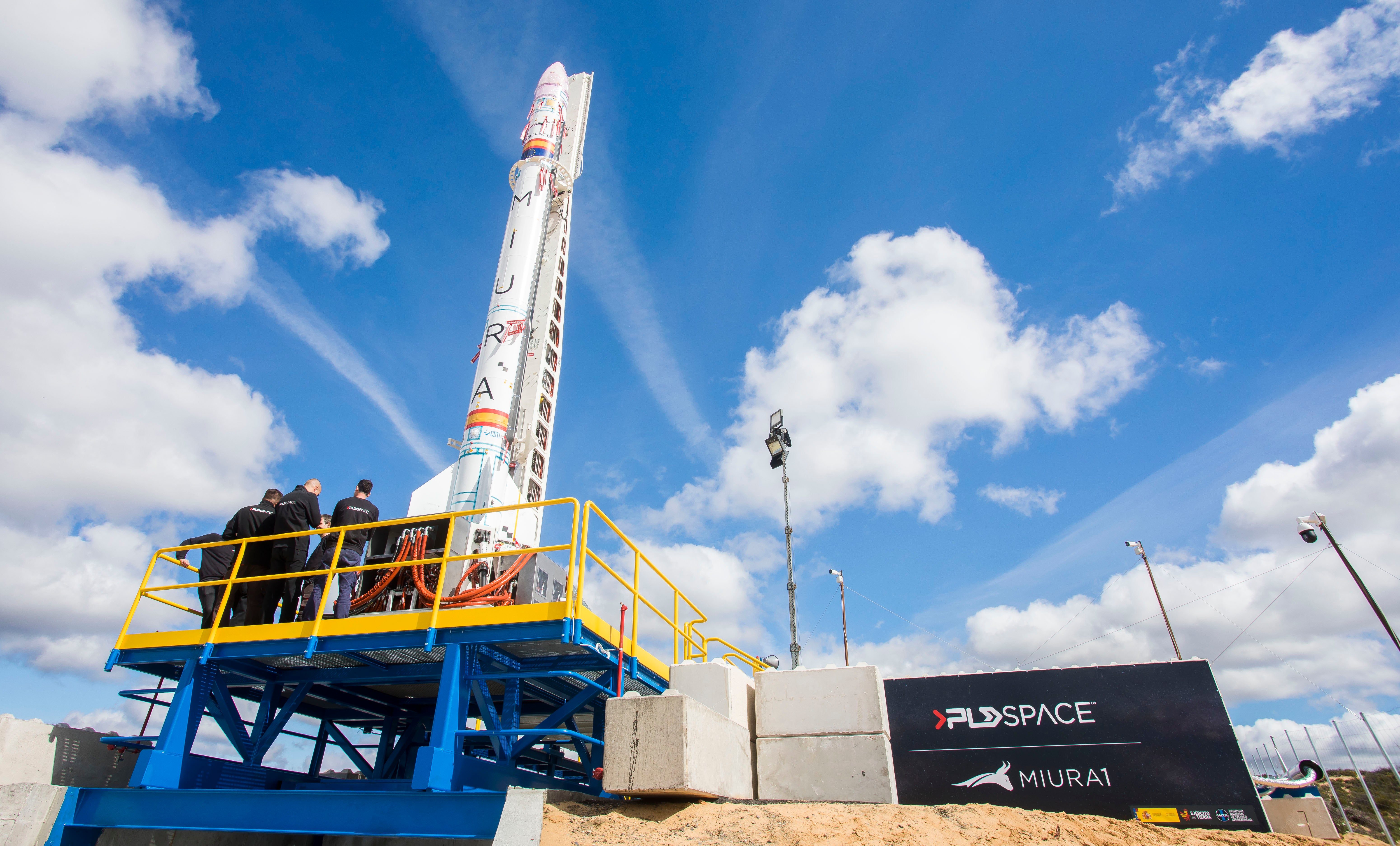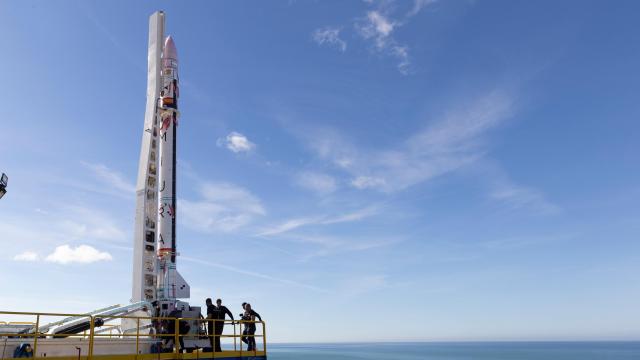Spanish manufacturer PLD Space successfully carried out the final ignition test of its reusable Miura 1 rocket on Wednesday, setting the stage for its imminent launch from southern Europe.
In the next few days, PLD Space aims to become the first private micro launcher company to actually launch a rocket in the European space race. The Miura 1 is a one-stage suborbital rocket that stands 41 feet (12.5 meters) long, or about the height of four-story building. The rocket serves as a proof-of-concept for PLD’s larger Miura 5 rocket, which aims to launch satellites into orbit beginning in 2025.
PLD Space developed the Miura 1’s TEPREL-B motor in-house, which can achieve a thrust of 30 kN with a simple pressure-fed cycle using jet fuel. The rocket can reach an altitude of 93 miles (150 kilometers) with a cargo of 220 pounds (100 kilograms) and is meant to be reusable for at least three trips.
Currently on the launch pad is the Miura 1 SN1, a protype that’s set to carry out an experimental flight at the end of May. The prototype’s structure is adorned with the Spanish flag, while the mission’s patch features a bull. This is a reference to the rocket’s name, Miura 1, given that “Miura” is the name of cattle farm known for Spanish fighting bulls.

In a press release, PLD Space said the exact date of the launch won’t be released until 48 hours before liftoff for security reasons. The company added on Twitter that the rocket will not launch before May 28th due to weather conditions.
PLD has carried out two tests with the rocket in an upright position on the launch pad: a wet dress rehearsal with a full load of propellants at the beginning of April and a static fire test on Wednesday. During the static fire test, Miura 1’s engine was set to to full power for five seconds. At its control centre at El Arenosillo, a rocket launch site in Spain, PLD completed the countdown to T-0 and aborted the launch with the computer that controls its launch sequence shortly afterwards.
The company reported that the rocket’s power down had been “nominal,” which means it was fine, and that the ignition system, the propellants’ temperature, and engine pressure all operated correctly. The umbilicals released from the rocket before liftoff also worked as planned. Furthermore, the infrastructure at the launch complex, which includes a ramp, the propellants, and multiple sensors and cameras, demonstrated its robustness.
The Miura 1 will be launched towards the Atlantic Ocean from a cliff on the coast of Huelva in southwestern Spain, specifically a military test zone known as “Médano del Loro.” The launch is scheduled to take place on a Friday, Saturday, or Sunday, when the area will be free of fishermen, at 7:30 a.m. local time. On the day of the launch, the air space will be closed, and officials will establish an exclusion area in the ocean. The Spanish Institute of Aerospace Technology has already approved several launch windows through May 31.

PLD Space, meanwhile, is currently paying close attention to the weather to select a launch date. If everything goes well, the rocket will cross the boundary into space before reentering and opening its parachute. Then, a team will proceed to recover it from the water. There are about 60 cameras on the launch platform and four on the rocket itself, which guarantees we’ll be able to follow its journey in-depth via streaming.
If the Miura 1 completes its first flight successfully, PLD will launch a second Miura 1, another SN2, and then proceed to focus on the Miura 5. The Miura 5 is an orbital rocket the height of an 11-story building with the capacity to launch 1,100-pound (500 kilogram) satellites. The rocket is already being commercialized and has its first clients.
Related story: Delayed Rockets From ULA and Europe Inch Closer to First Flights
Should the Miura 5 be successful, Spain would become one of 10 countries in the world with the capacity to send cargo into space. In addition, it would do so by the hand of a private company at a very complicated moment for Europe, given the delay of the Ariane 6 and the failures of the Vega rocket. In comparison, the Miura 1 seems very small, but it opens up new and exciting possibilities for Europe.
Twitter and bookmark Gizmodo’s dedicated Spaceflight page.
Editor’s Note: Release dates within this article are based in the U.S., but will be updated with local Australian dates as soon as we know more.
